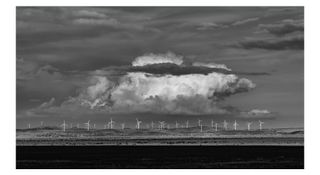After more than 30 years, the Reina Sofía Museum in Madrid, Spain, has lifted the ban on people taking photos in front of Picasso’s Guernica. Since 1981, when it was moved from the Museum of Modern Art in New York to its new home in Spain, people have only been able to marvel at the large-scale political symbol in person. Following the easing of restrictions visitors will now be able to capture the marvel, and perhaps themselves, in full glory.
The camera ban was lifted by the museum’s new director Manuel Segade, who is confident the new rules will reduce the amount of time people spend viewing the picture, making it possible for even more people to enjoy it. According to a museum spokesperson, no selfie sticks, tripods, or flash photography is allowed but any device – from a camera phone to a mirrorless camera – can be used.
• Why not also check out the best DSLR cameras, perfect for those who prefer a bigger grip and longer battery life
When Picasso was first commissioned at the start of 1937, he was struggling with a creative block. Two months before the piece was due to be unveiled he still didn’t have anything to show. On 26 April of the same year, the Basque town of Guernica was bombed by Italian and German airforces during the Spanish Civil War. The attack was considered a war crime as so many civilians died. The toll is thought a third of the population, many of whom were women and children, who feature heavily in the painting when you look closely.
Just three weeks after the attack, Picasso finished the enormous piece and to this day it remains one of the most important pieces of political art. Although the artist was living in France at the time and never returned to Spain, he was moved after reading a piece in The Times by South African/British journalist George Steer titled The Tragedy of Guernica: A Town Destroyed in Air Attack: Eye-Witness’s Account.
The change in camera policy at the museum is in keeping with the new director's goals. When Segade was appointed director in June 2023 he told Artnet he wanted to continue the museum’s work in “understanding contemporary art as a way of producing social transformation” by listening to younger voices and “softening the institutionality of the museum”.
By allowing photographs to be taken of this remarkable piece, Segade is enabling the Instagram generation to share Picasso’s work online which could encourage more young people to visit the gallery. Although many galleries and museums are anti-camera, this new stance opens up new ways of viewing and enjoying the piece - whether you live in Madrid or further afield.
Check out our list of the 50 best photographers ever including icons such as Henri-Cartier Bresson, Ansel Adams and Dorothea Lange





